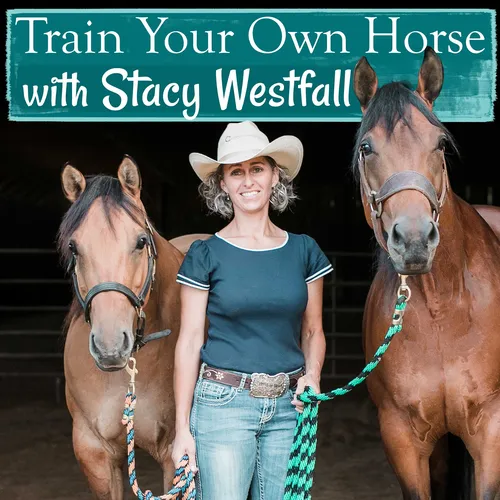Improving Your Aids When Riding Your Horse
- Author
- Stacy Westfall
- Published
- Wed 20 Mar 2019
- Episode Link
- https://sites.libsyn.com/140456/improving-your-aids-when-riding-your-horse
Today, I’m talking about how the rider's mind and the rider's body are both equally required for improvement. I'll be talking about balancing your aids and your mindset. A listener asks about allowing something to flow and making something happen.
This is all about balancing. You need to have a mindset where you can back up the requests you make. I explore this topic with listener emails, my own experience, and what I’ve observed watching horses and people.
Show Notes
[00:49] A listener email: James asks about the catch between allowing something to flow and making something happen.
[01:21] The rider needs to be able to make a request followed by a willingness and an ability to back it up.
[01:46] Think of a teeter totter and the balancing point in the middle of it.
[02:09] The mental part is the willingness to make the request. The ability to back it up is what we are physically required to do.
[02:18] Four different aids that we talk about a lot. These include the rider's hands, legs, seat, and voice.
[02:39] The hands are the first thing people think about using to control the horse. The second is the legs.
[02:51] The seat and the voice fall into the category of a please. The hands and legs have a way to backup the request.
[04:28] When you can add pressure you can also add release.
[04:54] Most riders are willing to make a request, but it gets a little fuzzy when it comes time to back it up.
[05:15] Stacy shares listener emails. Also, have your horse checked out by a vet if there are issues.
[06:39] Horses sometimes draw a line of what they are willing to do.
[08:30] Stacy shares varying degrees of pressure with her legs as backup queues after requests.
[09:18] People are afraid to hold horses accountable when there's a physical aspect to the training.
[09:56] When horses communicate with each other they make a request and have a willingness to back those requests up.
[11:02] Pressure can feel firm without feeling like punishment.
[12:42] Horses have different tolerance levels and that can create tension when riders make requests and the horses don't willingly follow it.
[13:46] Part of balancing your aids is you mentally accepting that the aids are okay and that you're willing to use them.
[14:10] The horse will figure it out if it bothers you to use your hands or legs.
[14:52] The tension in your mind can affect how you use your hands or legs. Hands can be used fast or slow or light or firm.
[16:08] People struggle with how firm or fast or slow they should use their hands.
[16:57] A lot of horses won't pay attention to a really light request.
[17:24] Reflect back on the idea of what you think is changing how you ride.
[17:49] The middle of the teeter-totter feels like allowing something to flow. If necessary, I step in and make things happen.
[18:15] I started this podcast because I really have a desire to help people understand what's going on with their horses.
[18:21] I never promised that it would be easy to execute.
[18:47] The mindset you have towards using your aids or hands and legs is the key to going forward.
Links and Resources:
Stacy's Video Diary: Jac-Episode 17- Colt starting: Ground (line) driving and dressage whip training
